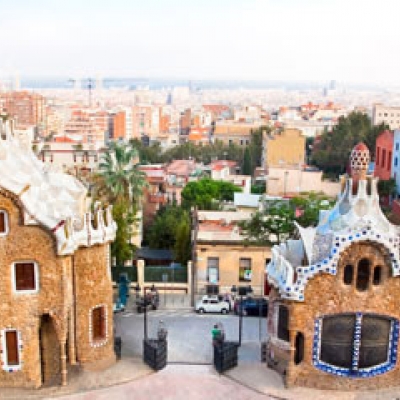Spanish Flamenco Guitar
The differences between classic Spanish guitars and flamenco guitars were not originally differentiated but rather evolved over time. Andalusian guitar-makers originally made flamenco guitars with a wide range of materials to suit different price categories. The cheaper guitars were made from cypress rather than rosewood, which was imported and therefore more expensive. The prevalence of the cheaper guitars would eventually evolve into the major distinction in construction between Spanish classical guitars and Spanish flamenco guitars.
Nowadays, traditional Spanish flamenco guitars are normally made of spruce or cedar tops and cypress or sycamore bodies. However, other wood can also be used including rosewood, maple, koa, satinwood and caviuna wood. Classical guitars, often referred to as Spanish guitars, are often made of mahogany, Indian or Brazilian rosewood for the backs and sides and the soundboards (tops) are made of spruce, red cedar or mahogany.
The combination of wood gives the flamenco guitar its classic color, lighter weight, and more percussive sound quality. Its “brighter” sound is also achieved by reducing the internal bracing and thickness of the wood used in the guitar’s construction. A flamenco guitar, in addition to being more percussive and brighter in sound, is also described as drier and more austere than a classical Spanish guitar. Flamenco guitars have more punchy tones and wide-ranging sounds that have been utilized by jazz and Latin artists as well as in Renaissance and Baroque music.
Spanish Flamenco Guitarists
The volume of the flamenco guitar is crucial as the Spanish flamenco guitarist must be heard over rhythmic clapping and the dancers’ tap dancing with nailed shoes. To achieve more volume, flamenco guitars are constructed with a combination of harder wood for the back and sides and a softer wood for the top. Flamenco guitar players also often use a cejilla (capo) in order to change keys and create a more sharp and percussive sound. Over time, flamenco guitarists developed techniques to enhance their sound and make their music more aggressive since they are often accompanied by orchestras, flutes and other percussion instruments.
Flamenco guitarists often use different postures, strumming patterns and techniques then those of a classical guitarist. One of these techniques, called golpes, involves the flamenco guitarist rhythmically tapping the soundboard area of the guitar. The rhythmic golpes are likely the biggest distinction between classical and flamenco guitar playing and are responsible for producing flamenco guitar music’s characteristic sound.
Golpes are employed by flamenco guitarists often and freely and are characterized by the following terms: toque airoso (graceful, rhythmic), toque gitano/flamenco (deep and expressive), toque pastueño (calm, fearless), toque sobrio (sober, not showing off), toque virtuoso (masterful), toque corto (short, basic), and toque frío (unexpressive). The flamenco guitar is protected from the golpes with a plastic guard called a golpeador that must often be replaced.
Other flamenco guitar playing techniques include: alzapúa (a thumb strumming technique), picado (quick single line scale technique), rasgueado (rhythmic strumming technique) and tremolo (rapid repetition technique of a single treble note).
Some famous Spanish flamenco guitarists (tocaores) include: Raimundo Amador, Vicente Amigo, Pepe Habichuela, Daniel Casares, Paco de Lucía, Enrique de Melchor, Manuel Molina, Manolo Sanlúcar, Paco Serrano, Pedro Sierra, Victor Monge (Serranito) José Fernández Torres (Tomatito) and many more.


